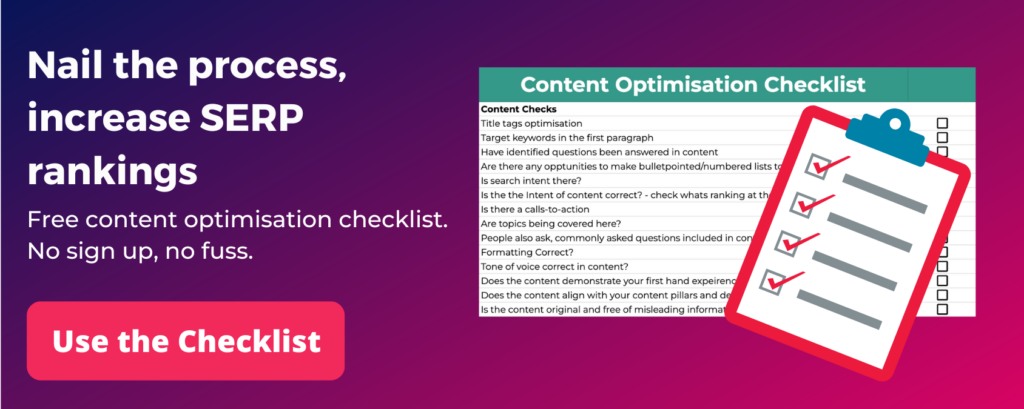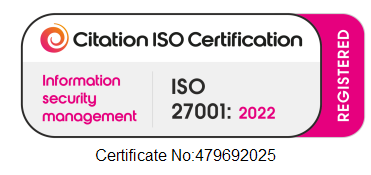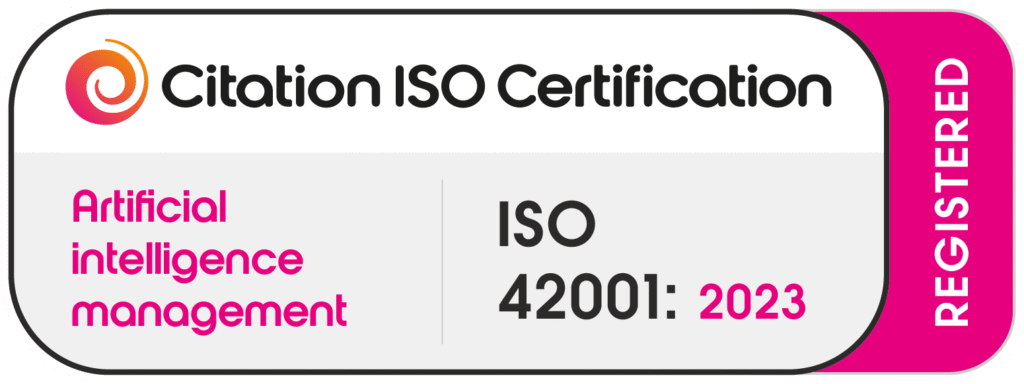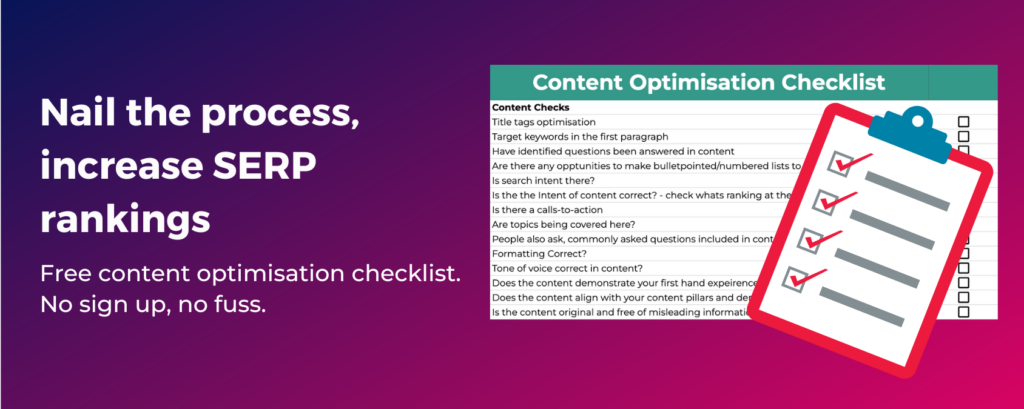
Driving organic traffic is an important part of any digital marketing strategy, and an effective, well-optimised content strategy is a crucial stepping stone to success. Imagine your website being easily found by people searching for what you offer – that’s the magic of well-optimised content.
In this article, we will break down the basics of SEO content writing and how it can significantly boost your website’s visibility on search engines. It also isn’t just about ranking higher; it’s about creating useful content that resonates with and serves the needs of your audience while playing by the rules set by search engines. Stick with us to uncover the secrets of crafting content that speaks to your readers and gets noticed on search engine results pages (SERP).
(Or you read more about are SEO agency services here.)
In this post:
What is SEO content writing?
So you’ve heard the phrase SEO content writing, but what does it actually mean? SEO writing involves creating content with the aim of securing a prominent position on the initial page of search engines like Google. It is accomplished through keyword research and the development of optimised content designed to address the user’s specific intent.
However, ‘SEO content writing’ in itself is a misnomer and writing purely to rank on Google can, in actual fact, damage your website’s credibility. The primary objective of content writing should always be to create helpful content for your audience that is aligned with your business goals. That said, ensuring this content is optimised for search is still vitally important. After all, we want to ensure your helpful content reaches our readers and increases business visibility. Let’s explore this further.
Why is optimising your content so important?
Unfortunately, simply writing content that’s helpful for your audience and aligned with your business goals is not quite enough. Without optimisation, even the most valuable and insightful content risks languishing in the depths of the SERP, missing out on potential readers and organic traffic.
A study conducted by Search Engine Journal in 2020 revealed that websites occupying the top position on the SERP experience a click-through rate (CTR) of 25%. The CTR declines to 15% for websites in the second position and drops even further to 2.5% for those in the tenth position. Needless to say, as you move to the second page of Google search results, the CTR declines even more.
There’s no simple, quick-fix formula sure to get your ranking within the top results immediately. However, there’s a whole host of things you can do to improve your SERP positions. Google uses more than 200 signals to rank content, and anyone telling you they know them all is lying. Unless they work for Google, in which case, good luck with that NDA breach! There are several elements of the Google Search algorithm that we do know – confirmed ranking signals.
A key aspect of content optimised for search is its power in building topical authority. By strategically incorporating relevant keywords and addressing current trends within your niche, your content becomes more discoverable and positions your brand as a knowledgeable and authoritative source. This, in turn, attracts a broader audience and fosters trust among existing and potential customers.
Developing an optimised SEO content strategy is paramount to maintaining strategic focus and effectively building authority. Determining your content pillars serves as the foundation of this strategy, providing a roadmap for creating cohesive and purposeful content. A well-defined strategy ensures that your content is not only aligned with business goals but also tailored to cater to the evolving needs of your target audience and their searches. This strategic approach boosts visibility and helps create a lasting impact on your audience.
Optimising your content for search engines is not just a technical requirement; it is a strategic necessity for ensuring your message reaches the right audience, establishes authority, and contributes to the overall success of your online presence. The ongoing development of helpful content updates, such as those by Google, emphasises the need for adaptability and a commitment to delivering content that satisfies algorithms and genuinely adds value to your audience.
What do we mean by helpful content in SEO?
Helpful content in SEO refers to online material that provides valuable information, addresses user queries, and meets the target audience’s needs. Search engines prioritise this type of relevant, high-quality content that satisfies user intent.
Google utilises the Helpful Content System to score results and enhance the visibility of high-quality content and reduce the prominence of unhelpful content on SERPs. The Helpful Content Scoring System is presented as a complementary component to various ranking systems, and it concentrates on recognising indicators of quality associated with quality content.
Another element to consider is the existence of the quality raters guidelines. This can give you a clue what Google considers to be helpful content. Check out EEAT in particular. While EEAT is not a ranking signal is it a great framework to understanding how helpful your content actually is.
So, what is EEAT? The acronym stands for:
- E – Experience
- E – Expertise
- A – Authoritativeness
- T – Trustworthiness
Here’s a brief explanation of each component:
Experience:
Experience is focused on determining if the writer has real first-hand experience of the subject matter they are writing about. For example, it is important to ensure authenticity and verify if a retailer or influencer has personally employed the products they are endorsing or a writer has personally visited the places they are highlighting.
Expertise:
Here lies the importance of your content pillars and developing valuable content within your business area. According to the guidelines, content should be created by individuals or organisations with expertise in the subject matter. Therefore having a wide selection of content that demonstrates genuine knowledge and competence in your field contributes to the overall perceived quality of your content.
Authoritativeness:
Authoritativeness highlights the importance of critical keyword research to determine exactly what your users are searching for and where you should build the foundations of your content strategy.
Google looks for content that comes from authoritative sources. For example, recognised experts, reputable organisations, or sites with a history of producing reliable and accurate information.
Trustworthiness:
Trustworthy content is vital for user satisfaction. Ensuring your content is accurate, transparent, original and free from misleading information helps build trust with users and search engines.
Optimising content for search: The Fundamentals
So now you know the importance of optimising your helpful content, let’s outline the core fundamentals and then explore putting this into practice.
- Keyword Research and Optimisation
- Intent
- Readability
- Ongoing optimisation
Let’s dig a little bit deeper into each of these fundamentals.
Keyword Research and Optimisation
The first step of the process will always be carrying out keyword research and optimisation. This should form the basis of your content strategy and outline exactly what you’ll be writing about within your business area. These keywords will then be strategically included within your content. More on this below.
Intent
Another core element of content writing for search is understanding your user’s intent. By grasping the intention behind user searches, you can craft content that aligns with their needs, increasing the likelihood of appearing in search results.
Readability
Readability involves finding the perfect equilibrium between optimising for search engines and ensuring your content is enjoyable and valuable for human readers. You should always aim to adopt a reader-friendly approach by using clear and concise language, steering clear of jargon, and incorporating headings to make your content more scannable.
On-going optimisation
Unfortunately, hitting publish and watching the organic traffic roll isn’t quite the end of the story. It’s important to monitor your content’s performance your ranking for key terms and keep an eye out for any new audience search trends on an ongoing basis. You should then adapt and update your content accordingly.
More on all of this below!
Step-By-Step Guidelines for Optimising Content for Search
Once you’ve got your fundamentals nailed down, it’s time to optimise your content for search. Here are the essential steps to follow:
- Begin with effective keyword research
- Write for humans over search engines
- Use an SEO-optimised title
- Leverage headings strategically for SEO Advantage
- Fine-tune your Content for featured snippets
- Strive for detailed yet scannable content
- Link to high-quality websites
- Internally link to relevant posts and pages
- Use original images
- Incorporate descriptive Alt Texts
- Double-check your content using our optimisation checklist
Let’s explore each step a little further…
Begin with effective keyword research
As explored above and explained by our SEO expert and company director, Sean, in Why is keyword research so important for SEO, keyword research is ultimately the difference between success and failure in your SEO strategy.
As so eloquently explained by Sean, writing content without carrying out effective keyword research is the equivalent of standing in a room shouting the answers to questions nobody asked.
The primary objective of conducting keyword research is to pinpoint a specific set of keywords that you can tailor your website content to, with the goal of improving your ranking in the SERP.
Conducting keyword research enables you to understand the searches your audience is performing, determine their intentions, and gauge their position in the buying process based on the nature of the queries they are making.
Write for humans over search engines
Whilst we know the importance of writing useful user content, it’s easy to fall into the trap of writing for search engines in a bid to win those all-important SERP top spots.
When writing, keep your audience and customer personas at the forefront of your mind and be sure to write content that genuinely aims to answer their queries and intent in a user-friendly, readable format.
Use an SEO optimised title
An optimised SEO title perfectly balances catering to search engines and appealing to human readers. It should be both enticing to read and beneficial for improving keyword rankings.
Tip: Be sure to include your keyword in your title.
Leverage headings strategically for SEO Advantage
Your SEO content headings should be used to benefit both your readers and your SEO performance. Headers not only improve your user experience but they also assist Google’s web crawlers in understanding the content and structure of your article. Imagine the crawlers behaving just like your human readers, looking to quickly scan your blog.
Your H1 should be used to summarise the overall article, while H2s, H3s, and H4s should further map out subtopics.
Subheaders should accurately represent the content in the body and incorporate high-intent keywords. By including keywords in your headings, you increase the likelihood of a higher ranking on the SERP.
Fine-tune your content for featured snippets
A featured snippet is a highlighted search result that appears at the top of the SERP. It is designed to give users a preview of the answer to their query without requiring them to click through to a specific website.
For example, if you are our SEO client in the IT sector and you are interested in appearing for a featured snippet for the search “charity cyber security best practices”, Google will display a featured snippet, as below, with the most clear and concise answer for the user.
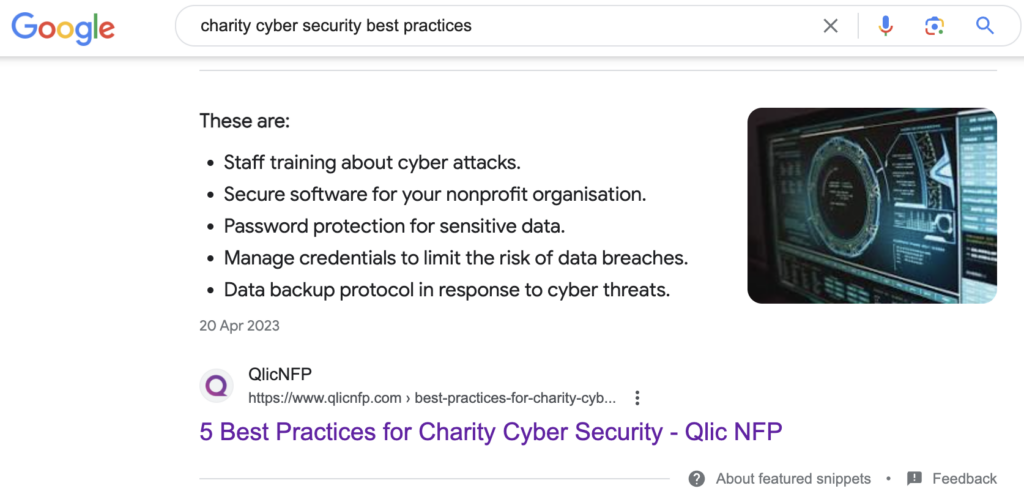
To bag yourself a featured snippet, you’ll need to answer questions succinctly and optimise your article accordingly.
For example, if the search query is “How to delete LinkedIn messages”, you can put “How to delete LinkedIn messages” as your H1 or H2, followed by the steps in a numbered or bulleted list.
Be sure to include part of the question within your answer and use active verbs at the beginning of each sentence to keep things clear and concise for the reader.
Strive for detailed yet scannable content
Whilst it’s important to answer your users’ queries clearly and concisely, this doesn’t mean your article should be short. Believe it or not, despite living in a world of fast-paced consumption and short attention spans, detailed content remains king in SEO content writing.
That said, ensuring your content is scannable is super important. Because as we mentioned, reliability is key for your human readers and Google’s Search Crawlers. Not only does it help Google quickly understand your article’s premise, but it saves your readers time and effort, subsequently improving their experience, increasing their engagement and maybe even the likelihood of them returning for more helpful content in the future. What more could you want?
Link to high-quality websites
Sharing useful links to other high-quality websites not only increases the usefulness of your content for your readers by helping to extend their knowledge but also demonstrates to search engines that you’re referencing trusted sources. It demonstrates that you know your stuff and have done your research!
Tip: Set your external links to open up in a new tab. You don’t want to send the reader away from your site completely, and it provides a better user experience by ensuring they can easily navigate back to your article.
Internally link to relevant posts and pages
Internal linking is an essential part of optimising your content for search. It helps search engines to discover your website pages and helps your audience to discover more useful content on your site, all while increasing the time spent on your site and therefore increasing the likelihood of a conversion.
Tip: When adding internal (or any!) links to your content, be sure to use natural language for your link text. Avoid spammy or generic calls to action, such as “Top Secret Discounts” or “click here.”
Use original images
Wherever possible, use original images. This was a much-discussed element of Google’s September 2023 Helpful Content Update.
For example, are you using stock images when blogging about a must-visit travel destination? Using your original images demonstrates to search engines that you’ve experienced and behold genuine expertise of the location you’re writing about.
Incorporate descriptive Alt Texts
Every image in your content should include Alt Text, whether it be in-body or featured. The Alt Text serves as a description of what is happening in the image for users when images do not load and those using Screen Reader software for accessibility. It should be driven by accessibility and not SEO!
They should always be used to provide context of the image and how it relates to the article and never as an opportunity for keyword stuffing.
Whilst it’s not an opportunity for keyword stuffing, if the keyword is relevant in context to the article and image, it should be included.
For example, if the below image was used in an article titled “The Benefits of attending our in-person SEO workshop in Brighton” with the keyword “SEO workshop in Brighton”

The Alt Text could be “SEO professionals sitting around a table at our SEO workshop in Brighton”
Use our handy Content optimisation checklist to make the process easier for you.
SEO Content Writing Don’ts
Avoid Keyword Stuffing
Always avoid the temptation to keyword stuff. Both in the body text and in the image Alt Text. First and foremost your content should be easy and enjoyable to read. Overuse of your keywords can lead to unnatural sentence structure and a poor user experience. This will then signal to Google that the article is not meeting your audiences’ needs and negatively impact your SEO performance.
Be sure to use natural language and include your keywords where they fit within that. Of course, if you can weave them in, that’s great! But adapting the structure purely to include them in at every vague opportunity is big no no.
Don’t be tempted to duplicate content, and keep an eye out for cannibalisation
Search engines love originality! For that reason, sharing new and original helpful content can go a long way in helping your site’s credibility and overall authority.
It’s simple – Original content is more likely to be considered unique and valuable, leading to better search engine rankings.
Conversely, duplicate content can result in search engines either not indexing your pages or ranking them lower due to a lack of uniqueness. There is no such thing as a duplicate content penalty, though! Also, be aware that duplicate content doesn’t just apply to other people’s websites! You should be sure to avoid duplicate content from your site too.
Another element to be familiar with is cannibalisation. Having similar content on different pages can lead to self-competition for search engine rankings and should be considered in your keyword targeting, too. Multiple pages that target the same keywords with very similar content will negatively impact the effectiveness of your SEO efforts, and none of the pages may rank as well as intended. This is also known in SEO as cannibalisation. While cannibalisation is not a problem in some cases, in others it is. If you are not ranking well with a piece, it’s worth checking if cannibalisation is the issue. But if you rank in positions 1 and 2, maybe you want not to touch anything!
Don’t rely on AI
There’s no denying that AI is a valuable asset in any SEO toolkit. And whilst the September 2023 Helpful Content update saw Google seemingly loosen the guidance on using AI-generated content, it’s still important not to be overly reliant on AI when SEO content writing.
The original guidance:
“Google Search’s helpful content system generates a signal used by our automated ranking systems to better ensure people see original, helpful content written by people, for people, in search results.”
The updated September 2023 guidance:
“Google Search’s helpful content system generates a signal used by our automated ranking systems to better ensure people see original, helpful content created for people in search results.”
We’ve had all kinds of discussions about it here at Vixen Digital as well. Check out Episode 6 of SEO’s Getting Coffee: Using ChatGPT for SEO – Dos & Don’ts, in which Sean and Emina discuss the importance of staying attuned to the quality limitations of AI and particularly its ability to provide accurate and original quality content.
Our Head of Digital Marketing Emina also went head to head with ChatGPT on content writting – check out Emina vs Machine: The impact of AI on SEO,
AI tools can certainly be used to effectively develop structure and generate ideas, but they should never be used to bulk produce SEO content and certainly have no place as a replacement for human SEO content writers.
Bonus SEO Content Writing Tip - Author Pages
As you develop your SEO content strategy, consider the creation of author pages. These will allow your readers to see who stands behind the content and will build credibility. As explored in Episode 2 of SEO’s Getting Coffee: The Power of Author Profiles and EEAT, detailed author profiles are one more step to show EEAT on your website.
Why? Because these profiles offer concrete evidence of the authors’ credentials and their standing within the industry. Head over to the episode write-up for the key takeaways and Author Profile best practices.
Closing thoughts
In summary, the key point to remember is that content should always be written to provide value to the reader. We should in fact consider ‘SEO content writing’ as optimising already helpful content for search. This process should always begin with thorough keyword research and planning, followed by developing your content strategy and pillars based on your audience needs and search intent in alignment with your business goals.
Be sure to always consider the fundamental elements of optimising your content for search when writing your SEO content and revisit our step-by-step guidelines to ensure you avoid common pitfalls and ace your SEO best practices.
Don’t forget to check out our Free Content Optimisation Checklist – no need to provide your email!
Don’t hesitate to reach out to us if you need help with SEO or read more from our other articles below.

